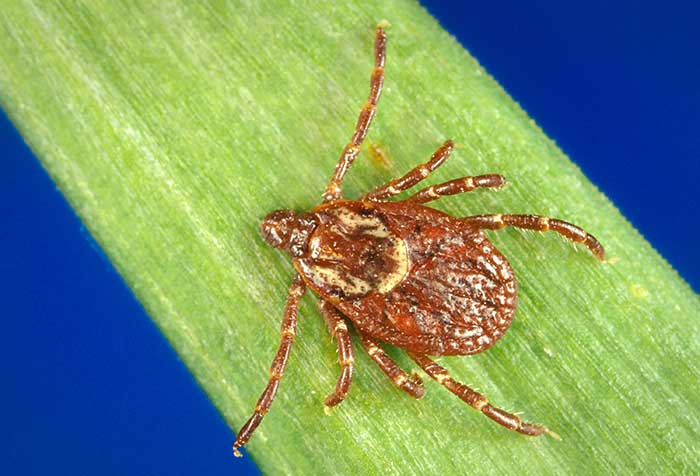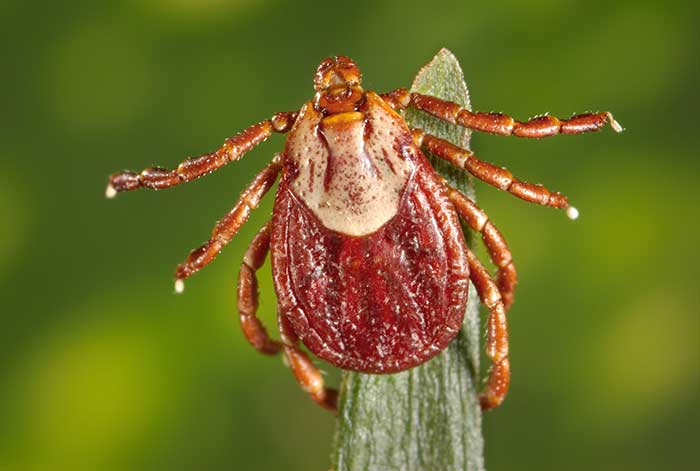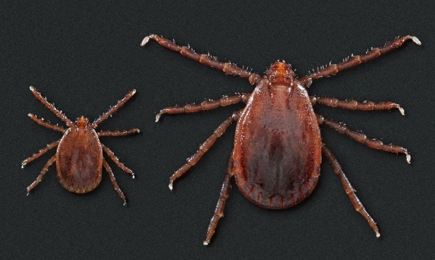PORTLAND, Ore. (KOIN) – It’s springtime in the Pacific Northwest which means the wildflowers are blooming, there are occasional breaks in the rain, and many people are eager to start hiking and getting outside more.
However, before you get on the trails, you should be aware that this is the time of year when ticks like to get onto you.
What are ticks and when are they active?
Ticks are arthropods that feed on the blood of humans and other mammals, birds and reptiles. They can carry lyme disease and other diseases, so it’s important for people to be aware of them and know how to protect themselves.
In Oregon, ticks are mostly active in the spring and early summer, but can also be found in the fall.
“When ticks seek a host, they perch on low branches of shrubs or tall grass and wait to attach to a passing bird, animal, human, or even reptile,” said Philippe Rossignol, a retired professor from Oregon State University’s fisheries and wildlife department.
There are many tick species in Oregon, OSU says, but only a few feed on humans or pets. These include the American dog tick, the Pacific Coast tick, the Rocky Mountain wood tick and the western blacklegged tick.



How to avoid ticks and tick bites
In areas where ticks are common or areas people are unfamiliar with, OSU says to avoid wooded, brushy or grassy areas. When hiking, stay on trails.
People spending time outside can keep ticks off their skin by wearing long-sleeved shirts, tucking their pant legs into socks and wearing closed-toe shoes. Wearing light-colored clothing makes it easier to spot ticks and people might want to use approved tick repellents to help keep them off.
“After going into natural areas, especially edges of wooded areas and forest openings, folks should check themselves for ticks. They tend to wedge themselves in places like waistbands or at the edge of the hairline, but they can be anywhere,” explained Josh Vlach, an entomologist for the Oregon Department of Agriculture.
Finding ticks within the first 12 hours after attachment reduces the chances of transmitting disease, Vlach said.
People who work or play outdoors often should perform daily tick checks on themselves and their children, OSU says. Ticks can also be carried indoors on pets, clothing or outdoor gear.
They can also be found in people’s yards. To reduce ticks in your yard, OSU says to remove leaf litter, clear tall grasses and brush, and keep wildlife out of your yard.
People can help protect their pets from ticks by using an insecticide product that’s effective against them. Veterinarians can provide advice on which product to choose.
Western Oregon has experienced a moist, cool spring, which the western black legged tick prefers. Vlach said this is the tick people are probably most commonly seeing if they’re spending time outside in early April and the cold, rainy conditions will likely extend its activity.

He said another concern is the Asian longhorned tick, which was found in the Eastern United States in 2017. Since then, it has spread as far west as Arkansas and Missouri.
“If folks find ticks after they or their animals have been in the eastern US, they should make sure they don’t have this species. It has legs the same color as its body, and you’ll have to use a magnifying glass to see this, but their mouthparts are pointed on the sides. They’re more likely to be attracted to animals than humans,” Vlach said.
What to do if you find a tick on yourself or on a pet
If anyone finds a tick crawling on their skin or clothing, they can be disposed of by placing them in alcohol or in a sealed container and throwing them in the trash.
Ticks that have attached to skin must be carefully removed and identified. Before removing a tick, OSU recommends disinfecting the area, then using pointed tweezers to grab the tick’s head as close to the skin as possible. Once the tick’s head is in the tweezers, firmly pull it straight out slowly to avoid breaking the tick.
If the tick’s head breaks off and remains in the skin, experts say this is OK. Tickborne diseases cannot transmit without the tick’s body.
Once the tick is off, disinfect the area again with rubbing alcohol.
The tick should be placed in a sealed container with alcohol and sent to a lab to test for diseases. OSU says to check with a medical provider to see if they recommend any additional steps.